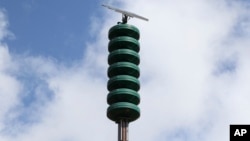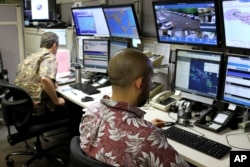The U.S. state of Hawaii has tested a nuclear attack warning siren for the first time since the end of the Cold War in an effort to prepare people for a possible missile attack by North Korea.
The sirens sounded for a minute on Friday, helping emergency officials to ensure the equipment worked properly and to inform residents and tourists about the warning system.
Hawaii Governor David Ige said this week that the test will ensure the public knows what to do in case of an imminent attack. He said people will have less than 20 minutes to take shelter after hearing the warning sirens.
The state is adding the signal to its monthly “Attention Alert” test, which warns people of an incoming tsunami or hurricane. Officials say the new siren uses a different wavering tone to distinguish it from other sirens.
The tests will continue to take place on the first business day of every month.
The Hawaii Emergency Management Agency (HI-EMA) is ramping up its efforts to educate the state’s 1.4 million residents and also visitors on how to prepare for a possible nuclear attack.
The agency’s administrator, Vern Miyagi, said he thinks an attack is unlikely, but said if North Korea were to strike the United States, he thinks Hawaii is a place the communist nation would look to attack.
“Hawaii is a likely target, cause we’re in the Pacific, we’re closer in to North Korea than most of the continental United States,” Miyagi said, “so it’s something we need to prepare for. As we track the news and we see the tests, both missile launches and nuclear tests, it’s the elephant in the room. We can’t ignore it.”
Friday’s test comes just days after North Korea fired an intercontinental ballistic missile that some analysts say could reach the U.S. mainland.
U.S. officials estimate a North Korean missile could reach Hawaii in about 20 minutes. It would take 5 minutes for authorities to determine its target, which would leave about 12-15 minutes to warn the public.
Hawaii is home to the U.S. Pacific Command, the military's headquarters for the Asia-Pacific region.










